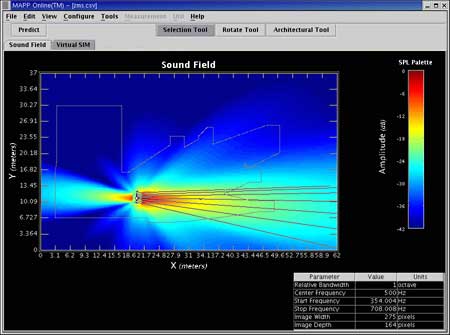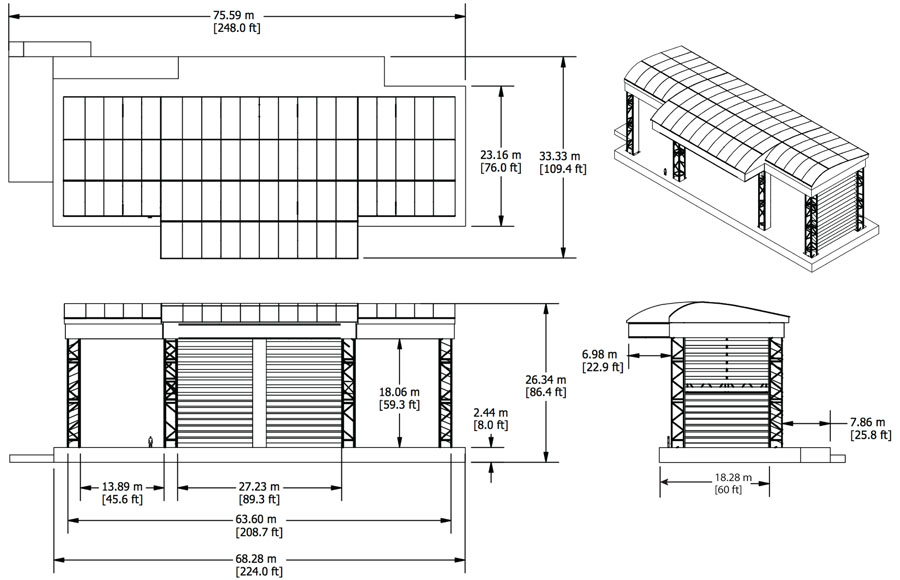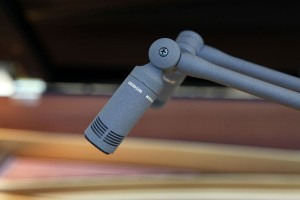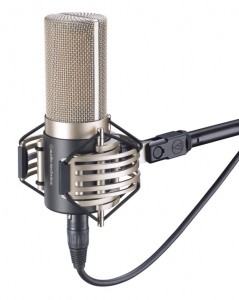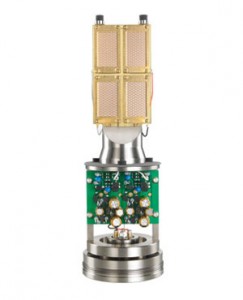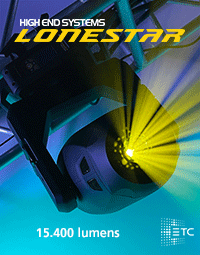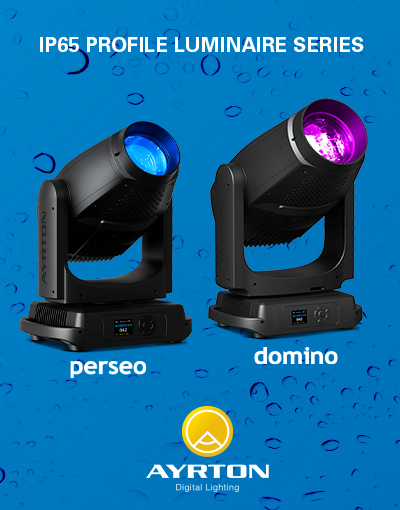With the IPD “Intelligent Power Drive” series, Lab.gruppen has created a new concept for the amplification of medium-power sound reinforcement systems that incorporates a DSP platform and intelligent power management into an affordable 1U rack sized package, which is light and easy to set up.
To do this, the Swedish manufacturer has changed its tune in amplification technology by opting for fully bridged class D instead of class TD (tracking class D) and is working on the optimal management of energy resources of the switch-mode power supply (without PFC) by distributing the available energy between the two channels as required.

The IPD series currently consists of two models: IPD 1200 and IPD 2400, which, as their names suggest, are capable of delivering a power of 2 x 600 W or 2 x 1200 W into 4 ohms, with both channels operating simultaneously. As we will see further on, in the tests, this refers to a peak power and not an average continuous power (RMS), but that meets the needs of program material with a crest factor*, depending on the type of music, that varies between 8 dB and 20 dB.
Overview
The front panel
The front is uncluttered, as the features of the front panel are contained in the obligatory, relatively ample area of one rack unit. In addition to the lateral handles for rack mounting, there are two ventilation openings: viewed from the front, the one on the right is the air inlet and on the left is the discharge. At the center is the blue LCD display (not always very visible in daylight, so adjust the contrast), framed on the left by navigation buttons (menu and back) and by the mute buttons (one per channel) with their green indicators.
 These indicators turn red in case of clipping at the input (pre-mixer). To the right of the display are the LEDs that indicate the activation of the limiters and the rotary encoder for selecting and configuring parameters. Pressing this encoder also provides the confirm/set function. The standby button (ON/OFF) with its LED is located under the display.
These indicators turn red in case of clipping at the input (pre-mixer). To the right of the display are the LEDs that indicate the activation of the limiters and the rotary encoder for selecting and configuring parameters. Pressing this encoder also provides the confirm/set function. The standby button (ON/OFF) with its LED is located under the display.
The rear panel
The IPD series amplifiers have two balanced analog inputs with link outputs and an AES/EBU input (2 channels) also with link (and automatic switch-over). In the case of a complete connection, the AES inputs can take control if something goes wrong or there is signal loss on the analog inputs. This is an interesting operational fail-safe. Similarly, the output connections are via SpeakOn (1+/1-) for each channel but are also available on binding post terminals for stripped wires respecting the Low Voltage Directive. These also accept standard banana plugs.
 The NL4 SpeakOn 1 connector is fully wired for 1+/1- and 2+/2-, with the output of the two channels. All configurations are thus possible, which corresponds to the operating flexibility of these products, suitable for both fixed or temporary installation and touring with small sound reinforcement systems. Be aware that the channel outputs are already bridged with a peak deviation of about 100 V and, therefore, impossible to bridge (so you should not try this).
The NL4 SpeakOn 1 connector is fully wired for 1+/1- and 2+/2-, with the output of the two channels. All configurations are thus possible, which corresponds to the operating flexibility of these products, suitable for both fixed or temporary installation and touring with small sound reinforcement systems. Be aware that the channel outputs are already bridged with a peak deviation of about 100 V and, therefore, impossible to bridge (so you should not try this).
[private]
On board signal processing
IPDs include a full signal processor with input matrixing (analog and AES), all in 1 rack unit. This should be taken into consideration when comparing the price and the size of a 2-channel amplifier and that of a 4-into-2 processor. The technology used was probably inspired by Lake platforms that are now owned by TC Group, which also owns this Swedish brand. Besides local control via the front panel, Lab.gruppen offers a monitoring software called IntelliDrive that allows the complete configuration of an amplifier and even the formation of groups of amplifiers, which can, for example, be muted, unmuted or placed in standby with a click.

Two-way input mode

Stereo mixer input level screen
Each amp is identified by its MAC address and IP address, as the control connection is established via Ethernet, either directly, in the case of a single amp, or via a switch or a WiFi router when multiple amplifiers are networked. Recognition is automatic.
We would have liked a USB port for local configuration because even if the user interface and the depth of the menus are simple, it is always less tedious than manual navigation in the menus and submenus. Of course, we can do the same with a single RJ45 Ethernet cable between the PC and the IPD but there is usually only one Ethernet port on a PC, whereas there are usually multiple USB ports.

IPad app for IntelliDrive
Also, an embedded Ethernet switch would allow chaining a group of amps without requiring the use of an external switch, which is always limited by the number of ports available. But these are observations that we should make while also considering the price (see below), which is quite reasonable for an amplifier/controller in this class.
By the way, there is indeed an application for iPad (available from the App Store) to control IPD amplifiers, but we have not evaluated it. We recommend that you consult the Lab.gruppen website, where there are videos about its use and about the IntelliDrive software.(http://labgruppen.com/products/ipd_series_touring).
 The above illustration from the Lab.gruppen documentation shows the overview and the functional blocks of the amplifier, the signal path and the menu directory tree when setting it up from the front panel.
The above illustration from the Lab.gruppen documentation shows the overview and the functional blocks of the amplifier, the signal path and the menu directory tree when setting it up from the front panel.
When multiple devices are networked, the “global” window allows you to form groups, to name them and the individual devices, to split a group or one or more devices of a group, …
Control from IntelliDrive occurs in real time, settings are applied directly on the amp involved and, conversely, settings made locally through the menus of an amp are instantly reflected in the control software.

IntelliDrive output equalizer (10 bands)
As for processing, the user has access to input and output gains, a 10-band parametric equalizer at the input and output, shelving, low-pass and high-pass filters, two-way crossover filters with different responses and the possibility to have asymmetric and symmetric filters together and, finally, input and output delays up to 2 s.
The output voltage limiters can be set in volts or in dBu with reference to impedance. These are used in the presets to limit the maximum voltage swing in order to prevent excessive mechanical excursion in the transducers. Other limiters, prior to these in the signal chain, are dedicated to RMS limiting (to avoid overheating moving coils).
Construction
The electronics are spread over several FR4 (epoxy) printed circuit boards, seven in total. These include two dual-mono output boards, which incorporate the power supply and the class D amplification for each channel. These boards are double sided and double layered, populated with THD (through-hole) components on one side and SMD (surface mount) components on the other.

Full internal view of the two boards of the amplifier channels on the left, with their integrated power supplies. On the right, you can see the board with the capacitors for energy storage that are shared by the two channels.
Both boards are supplemented by a PCB that we will call “power reserve” board, essentially populated with capacitors, which double the capacity mounted on each of the power-supply/amplifier boards.
The heatsinks consist of two aluminum brackets supporting the amplification boards. Class D operation and the variable-speed forced convection explain this minimal choice, which reduces the amount of material and, therefore, the overall weight. In fact, an IPD 2400 weighs only 6.2 kg.
Even at high power, the internal temperatures never get really high, so the manufacturer was able to choose low-ESR capacitors at 85° C, as opposed to 105° C.

The input cards, conversion, signal processing and network interface.

The switching H-bridges with their filters, at the bottom left of each aluminum bracket.
Behind the front panel, there is a protected PCB that supports the display and the encoder (and, of course, the buttons). This is connected by ribbon cable to the control (and conversion) board that is located on the rear panel, which also supports the DSP board. Finally a narrow board provides the output connections: SpeakOn connectors, terminals and mains.
It is all careful workmanship which, considering the modular architecture, suggests that another series or addition(s) could soon be available.
Forced convection is carried out by a pair of low profile fans that draw air from the right of the front side (seen from the front). This air circulates between the heatsink brackets and is discharged on the left of the front and, partially, on the rear.
Measurements
Power and response
With the effective power (RMS) on a sinusoidal signal, using both channels in a stereo configuration, we measure a little more than 150 watts per channel, both at 4 ohms and at 8 ohms. Operating only one channel, the average power rises to just over 320 W into 8 ohms and 295 W into 4 ohms. In fact, it is the power rail limiters that come into play here and provide a constant overall average power.
For this test, we let the voltage limiters peak at their maximum (98 V peak*) using the IntelliDrive software (which can also be done via the front panel), with the objective of measuring the peak power, knowing the limitations involved.
Then we conducted EIAJ burst measurements, with cycles in sequences of 20 ms to Vmax (Pmax) over a period of 200 ms to assess peak power. And, contrary to what is generally practiced, low level outside the peaks was set to average P, 150 W, which we believe is more consistent with the operational reality than at zero.
Figure 1 shows the signal for 8 ohms, built with Audio Precision APx Waveform burst utility, and the response of the amplifier (oscilloscope) in Figure 2, which corresponds to 49 V peak (8 ohms) and 35 V peak (4 ohm) for the lower level and 98 V peak for the high level. The amp goes smoothly through these bursts and delivers 600 W peak (98 V peak) at 8 ohms and 1200 watts peak (98 V peak) at 4 ohms each with a crest factor of 6 and 12 dB, with a THD less than 1% on the peaks, without hard clipping.

Figure 1

Figure 2: waveform corresponding to the burst in figure 1 Both channels operating at 8 ohms

Figure 3
Two other ways of seeing the potential behavior are provided in Figures 3 through 5. We highlight the voltage limitation with a voltage ramp in Figure 3.
Mind that, in order for the curves at 4 and 8 ohms not to overlap, we kept the reference load at 8 ohms for power in both cases (so you have to divide it by two at 4 ohms).
We can clearly see that, after peaking, the power stabilizes at 150 W (with both channels operating simultaneously).
Figures 4 and 5 give a temporal representation of two channels (0 dB gain) solicited at a Pmaxmax level by a continuous wave of 500 ms. Note that the P peak lasts longer than 50 ms at 8 ohms as well as at 4 ohms.

Figure 4

Figure 5
Figure 6 is the result at 8 ohms, at -1 dB Pmax. The “high” level lasts almost 100 ms.
The IPD2400 therefore delivers its declared peak power, complying with the most stringent tests that correspond to the realistic use of percussion, where the attack and resonance will be reproduced well even at low frequencies.

Figure 6
The intelligence of the power management consists of allocating all or part of 300 W RMS for each channel as needed while retaining the possibility to reproduce peaks at Pmax.
Although they can work in stereo, IPD amplifiers would more advantageously – as it is their primary purpose – be used in two-way systems (or in three-way systems with passive mid-high crossovers), with the crossover filters, EQ corrections and the delays they provide.
To conclude this section about power, note that the IPD 2400 supports 2 ohms loads, although at lower RMS power (2 x 70 W at 0.5% THD), due to the current limiters, and deals perfectly with short-circuits (see Figure 7).

Figure 7: short circuit with a square wave at full power
Finally, we performed measurements on a complex load by placing a bank of high voltage capacitors totaling 132 µF in parallel with our measurement load, corresponding to 8 ohms at a load impedance of 4 ohms modulated at 250 Hz and with a current/voltage phase shift of 60° (Π/3).
Full power at 250 Hz is achieved without degradation and with the same THD as into a purely resistive load.
This is not surprising with a bridged class D structure, where the amplification (switching) stages recycle their reactive power into the power supply without pumping.

The load used and the audio filter, above on the left.
It’s one of the benefits of this amplification structure that make it ideally suited for the highly reactive transducers with high BL specs that are now available.
The frequency response is shown in Figure 8, where we see that the high cut-off is mainly due to the conversion and processing at 96 kHz, which infers a steep cut just below 48 kHz.
In Figure 9, the response is due to our interposed measurement filter that cuts around 30 kHz with a 6th order Bessel response.
This filter is essential for distortion and dynamics measurements but does not alter the phase in the audio band. We see that the slight overshoot, due to class D output filters and negative feedback, has disappeared.

Figure 8

Figure 9
Input level, gain, CMRR and damping factor
The maximum analog input level is +20 dBu with a balanced input impedance of 18 kΩ. The gain of the amplifier (with the input and output gain of the processor at 0 dB) is about 36 dB and the peak power is obtained at +6 dBu input in analog mode and at -14 dBFs in AES mode. This means that working at +4 dBu (usually 0 dB) on the console or preamp, and allowing for peaks of 12 dB, the overall gain should be set at -8 dB, at the most.
To obtain the best dynamics, you should, instead, lower the output gain (the one directly accessible from the encoder outside the menus). We measured an output impedance of 17 mΩ – very nice – which, with an 8 Ω load, provides a damping factor of over 470. Bass transducers are well controlled, with a minimal lag. This measurement takes into account the contact resistance of the connections and thus represents real-world field conditions, where you also have to take into account the length of the connecting cable and its resistance per unit length.
The rate of common mode rejection on the analog inputs is constant at the three frequencies (40 Hz, 1 kHz and 10 kHz) at 68 dB on one channel and 58 dB on the other. This is a fairly large disparity between the channels, but the manufacturer declares greater than 50 dB. It is therefore entirely consistent. This measure is less important on a power amp than it is on console inputs, as the lengths of connection cables and the sources are not the same.
Distortion and dynamics
For this kind of measurement on a class D amp, a filter is inserted to attenuate fast-rising HF signals due to the switching process (see above) that can disturb the input circuits of the analyzer. Obviously, this limits the THD measurement with all harmonics up to the 10th order around 3 kHz. At 10 kHz, the only ones to be taken into account are the 2nd and 3rd harmonics, which are, despite everything, still predominant.

Figure 10
In Figure 10, where the curve is taken at 2 x 100 W into 4 ohms, and where we have intentionally expanded the frequency sweep, we see the abrupt break at about 16 kHz where the 3rd harmonic falls.
The results are very good for a bridge-operating class D amp and, above all, the two channels follow well, indicating good manufacturing uniformity.
In fixed frequency mode, we found harmonic distortion rates of 0.002% at 40 Hz, 0.008% at 1 kHz and 0.012% at 5 kHz at 130 W. This is quite decent. Intermodulation distortion (SMPTE, 60 Hz, 7 kHz at a 1:4 ratio) at 2 x 150W is around 0.01%. And when the RMS limiter threshold (knee) is reached, the harmonic distortion does not exceed 0.1%, which is remarkable.
As dynamics are concerned, we measured a signal to noise ratio of 95 dB (un-weighted) and 97.5 dB (A) at -22 dBFS using the AES input, which corresponds to a S/N ratio at maximum level of 104 and 106.5 dB respectively, which is excellent for a class D amplifier in particular and very good in general.
Figures 11 through 13 show an FFT (Fast Fourier Transform) frequency breakdown, with a stimulus at 1 kHz and a 2 x 100 W output (at 8 ohms).

Figure 11
In Figure 11, the measurement filter is not inserted to highlight the lines of the PWM. We see that the frequency, fixed here, of the pulse width modulator is about 350 kHz (far from the audio band), but still at a level of -6 dBV (0.5 V).
We understand that this could create measurement artifacts. Fortunately, this is inaudible and totally compensated by the loads representing the speakers.
In Figure 12, the same FFT is taken with the measurement filter inserted. The principal PWM peak is below -60 dBV and the HF noise has almost completely disappeared.
The good news is that the audio spectrum is almost identical, indicating that there are no further intermodulation products, as can be seen in Figure 13 where we have limited high frequency range in order to enlarge the details on the x-axis.

Figure 12
 Figure 13[/caption]
Figure 13[/caption]
Nevertheless, there is a peak at 650 Hz with harmonics 3 and 5, which is probably due to a beat with a multiple of the mains frequency, at a level almost identical to that of the second harmonic of the stimulus.
We also note that the 5th harmonic is predominant at 8 ohms and the 3rd at 4 ohms (Figure 13), which is due to the idle time that is inevitably introduced in the control of the half-bridges (MOSFETs) of the class D output to prevent any simultaneous conduction of this high switching frequency, and to the LC output filter that is better suited to a 4 ohm load.

Figure 14
Figure 14 shows the response to a square wave at 1 kHz with one channel operating at 312 W RMS (8 ohms). The front edges are clean and the over-oscillations are due to the digital filtering with a pseudo-frequency located at less than Fs/2 (48 kHz).
The excessive oscillation stays within the order of 10% of the peak-to-peak voltage. Rise times and fall times are similar with a traverse rate of about 40 V/μs for the amplification stages.
Latency, with conversions and signal processing performed at 96 kHz (24 bit quantization), is in the order of 620 or 660 microseconds depending on whether we drive the amplifier with an analog or an AES input.

Figure 15
One might expect less with a digital input but, in fact, an SRC (Sample Rate Converter) is always inserted (Figure 15).
In Figure 16, we added a delay of 11.628 ms on channel 2 via the IntelliDrive control interface, which is thus addition to the inherent latency of 620 μs. The time entered corresponds perfectly, as we obtained a total of just over 12.2 ms.
Finally, in Figure 17, the IPD 2400 is operated in 2-way mode with a 4th order Linkwitz-Riley type crossover filter set at 800 Hz. We also applied corrections to the low and high bands in accordance with the associated screen shots. As seen on the curves in Figure 17, everything corresponds perfectly. IPD allows you to save one hundred presets per library. This is more than you would ever need, even if you had a huge number of loudspeakers or of speaker systems of all types.

Figure 16

Figure 17

Input EQ (Figure 17)

4th order LR crossover at 800 Hz (Figure 17)
The power supply
The universal power supply (100-265 V) or, rather, the two power supplies (one per channel) do not feature power factor correction, as demonstrated in Figures 18 and 19, taken at half power and Max RMS power (300 W) respectively, which show that the peak current exceeds 10 A (voltage and current probes 1/100).

Figure 18

Figure 19
Note the crest factor of the current is in the order of 5, which leads to an RMS current of approximately 2 A. This is typical of direct rectification, in which the current wave corresponds to the conduction of the rectifier diodes at the peak of the sinusoid wave. The current corresponds to the blue trace, while the voltage is shown in yellow.

Peak current in stand-by
This screen shot form the oscilloscope shows the current draw in stand-by; the peak current drops to 500 mA, which, together with the high crest factor, results in a power consumption of about 10 W. Only the auxiliary supplies are functioning to power the control electronics, including the network interface.
Conclusion
The IPD series and, in this case, the IPD2400 are complete amplifiers that will adapt to all types of medium-power speaker enclosures and to installed sound systems.
The on-board signal processing is comprehensive and easily configurable, and the performance is up for the job. In addition to being controlled through a wired Ethernet network, they can now even be controlled remotely with a wireless router and a tablet using the Lab.gruppen application.
We particularly like the intelligence of their power management, their compactness and low weight. In short, they feature smart power and a high quality/price ratio for a European design and quality manufacturing in Thailand (with the European standards).
* Crest Factor : ratio (which can be expressed in dB) of the peak value of a parameter (power here) and its average value, therefore 10 log(Ppeak/Prms). Musical signals, depending on the type of music, have a crest factor ranging from 6 dB (highly compressed music) to more than 20 dB (symphonic music), approximately 12 dB on average.
* * 98 V peak corresponds to a peak power of 982/16 at 8 ohms 982/8 at 4 ohms, with a sinusoidal signal – respectively 600 W and 1200 W.
[/private]























































 Figure 13[/caption]
Figure 13[/caption]



















